The Hindustan Shipyard in Vizag, originally known as the Scindia Shipyard, has recently completed 81 years of establishment. Though the known history of the HSL dates back to 1941, the stories of shipbuilding in Vizag originated during the mid-1800s. How the facility metamorphosed from small mud docks to one of the major contributors to the vessel building domain in the country is a story that must not remain untold. John Castellas, a Vizag aficionado and heritage enthusiast, narrates the story of the origin and rise of the Hindustan Shipyard.
When industrialist Walchand Hirachand’s Scindia Steam Navigation Company was dependent on vessels made mainly in the UK, he agreed with a government plan to include his new shipbuilding facility at the recently opened Vizagapatam Harbour and took possession of the land in November 1940. Dr Rajendra Prasad, who was then the Acting Congress President, laid the foundation stone for the shipyard on 21 June 1941. Sir Alexander Gibb & Partners of London, the same consulting engineers that designed the harbour and the dredger Vizagapatam, developed the Scindia Shipyard layout plan.
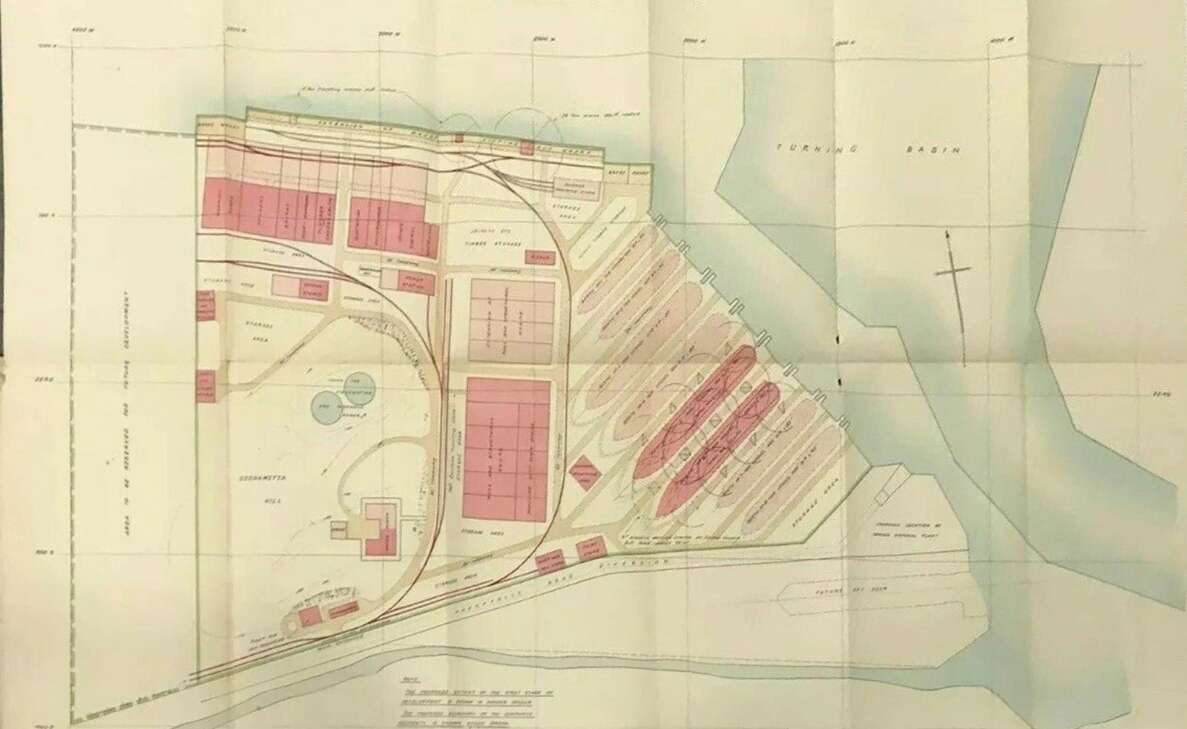
The traditions of building ocean-going craft were well established in Vizag in the mid-1800s and the location of the current Hindustan Shipyard was where the Mud Docks of Vizagapatam once flourished.
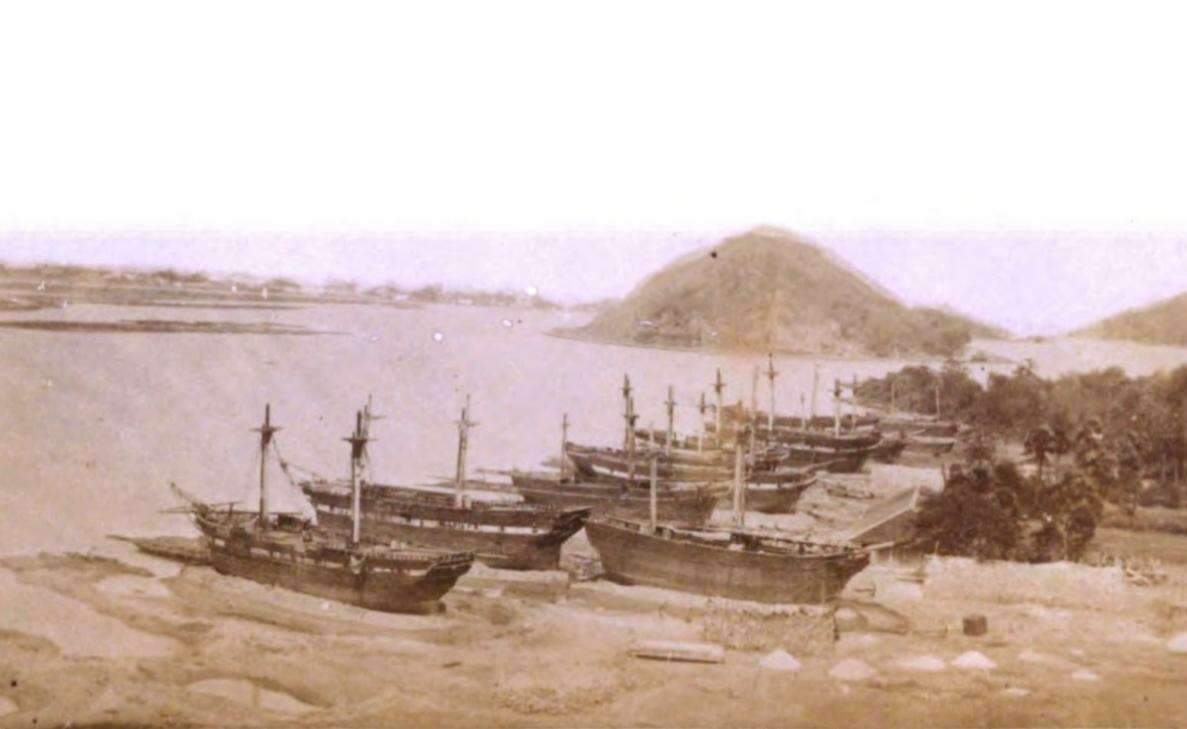
It was at these Mud Docks that the first Vizag-built sailing ship ‘Diana’ of 185 tons was launched in 1821. Diana was most likely built for Zamindar Surya Narayana Rao who was the father of GV Jagga Rao, the eminent astronomer of Vizag. At that time, Bombay had been the centre of shipbuilding for foreign voyages since 1736 with the construction of 3 to 4 vessels per month, with European design and supervision and local artificers. Highly durable Malabar teak was in abundance for the ships’ hulls, decks, keels and sternposts Imported iron bars from Europe were fashioned into various fittings as were copper, lead, and zinc. The anchors were from Europe. India produced plantain rope, hemp choir and jute. Canvas was also readily made locally. Mariners also discovered that the Indian tar, extracted from the teak chips and sawdust of the vessel itself, was superior to European tar.
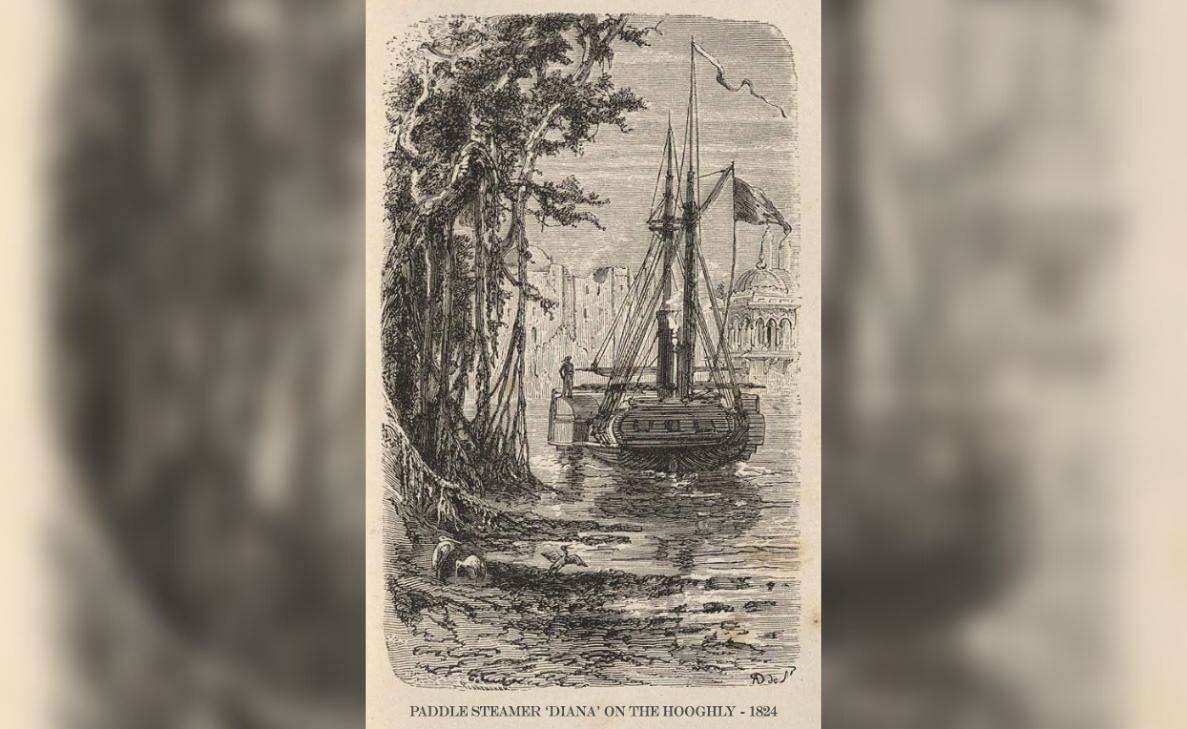
The Bengal Government bought the vessel and modified it as a paddle steamer to pioneer steam navigation in India. Her frame timbers and machinery were from Messers Maudslay, Son & Field and Messer Kyd & Co at Kidderpore practically constructed a new vessel out of them, and she was re-launched in July 1823. Her trials on the Hooghly were not satisfactory and the vessel never could travel more than 30 miles per day. She was transferred to the Hoogly Pilot Service. At the outbreak of the Burma War, the East India Company purchased the ship.
The Scindia Shipyard, with the two keels, laid V1 & V2, for the first ships to be built in Vizag, were the most likely target when Japanese aircraft attacked Vizag on 6 April 1942.
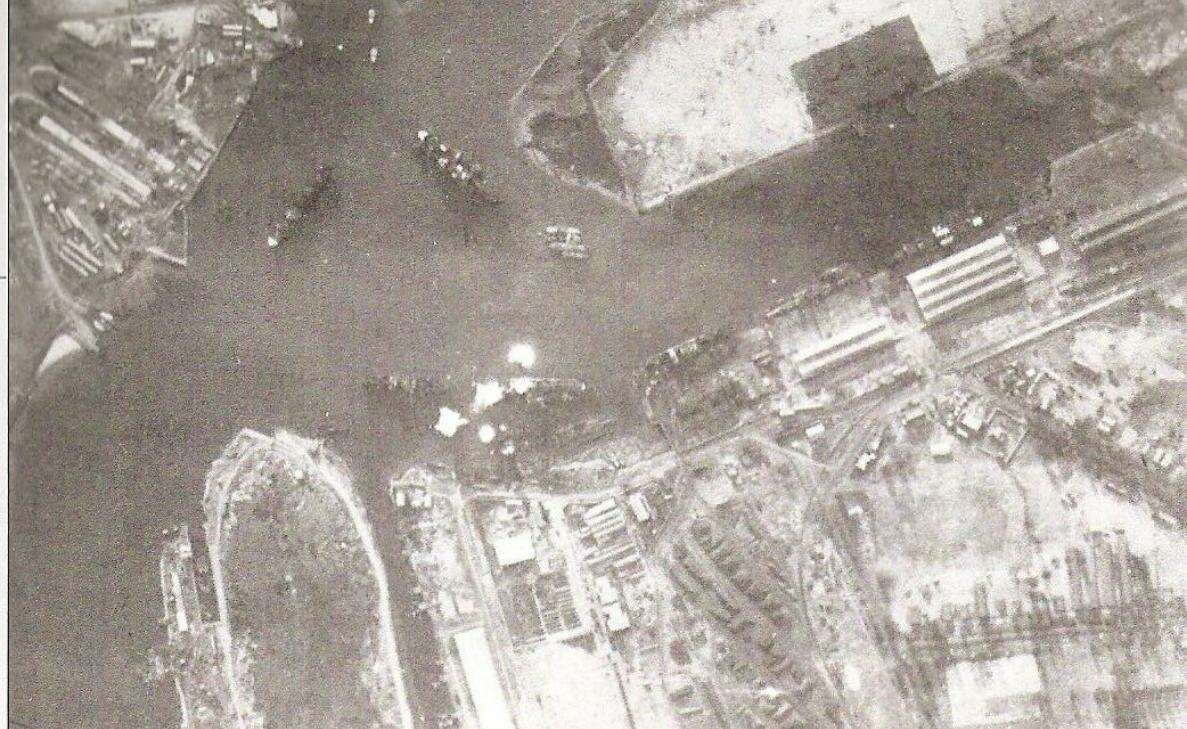
The white splashes mark the falling bombs and luckily, none of the steamers hurriedly moving through the Turning Basin was hit as sinking those ships would have disabled all shipping.
Despite air raid training, the population of Vizag panicked at the sound of the Japanese aircraft and it was reported that…
‘The railways were practically paralyzed and all the subordinate staff and labour fled from the place…every jatka and goodu bundi was employed by Vizag’s population in a long road train inland to Waltair and Vizianagram. All local shops were closed and practically everyone fled the town. The port employees fled, the labour at the Scindia Shipyard fled, as did the coolies employed on the construction of the aerodrome.’
The Scindia Shipyard was deserted and the company decided to remove all raw material and equipment to Vizianagram for protection and possible relocation to another port like Bombay.
After World War 2, the first ship to be constructed fully in India after independence was built at the Scindia Shipyard in Vizag and named Jala Usha. Prime Minister Jawaharlal Nehru launched the SS Jala Usha on 15 March 1948.
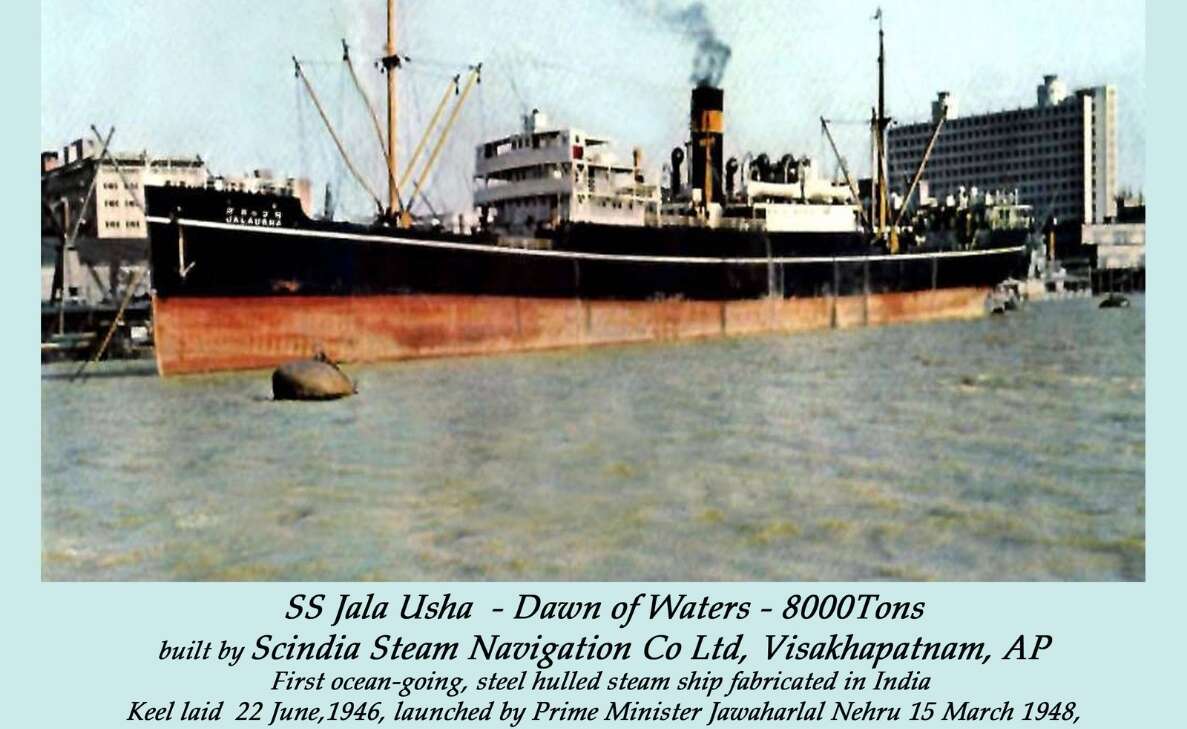 In 1961, the shipyard was nationalised and renamed Hindustan Shipyard Limited (HSL). In 2010, HSL was transferred from the Ministry of Shipping to the Ministry of Defence to provide increasing support for the growing Indian Navy fleet at Vizag. The HSL facility has built or refurbished over 2000 vessels that include bulk carriers, offshore patrol vessels, survey ships, drilling rigs, offshore platforms, pilot vessels, tugs and other repair and harbour support craft.
In 1961, the shipyard was nationalised and renamed Hindustan Shipyard Limited (HSL). In 2010, HSL was transferred from the Ministry of Shipping to the Ministry of Defence to provide increasing support for the growing Indian Navy fleet at Vizag. The HSL facility has built or refurbished over 2000 vessels that include bulk carriers, offshore patrol vessels, survey ships, drilling rigs, offshore platforms, pilot vessels, tugs and other repair and harbour support craft.
The shipbuilding industry in Vizag has provided training and careers for many of the townsfolk over the years and HSL continues to be the mainstay of the ballooning economy in Vizag.
Should you have an anecdote or history on Vizag, the author would appreciate you contact him at jcastell@ozemail.com.au
Written by John Castellas whose family belonged to Vizag for 5 generations. Educated at St Aloysius, migrated to Melbourne, Australia in 1966, former General Manager Engineering at Boeing & Qantas Airways, in retirement Lecturers in Aviation Management at Swinburne University and is a Vizag aficionado.


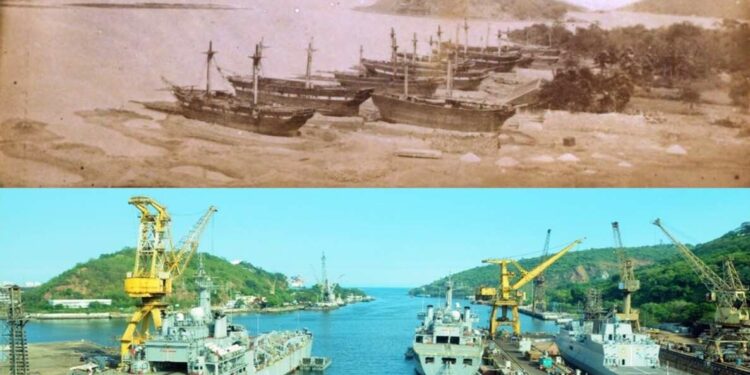







Discussion about this post